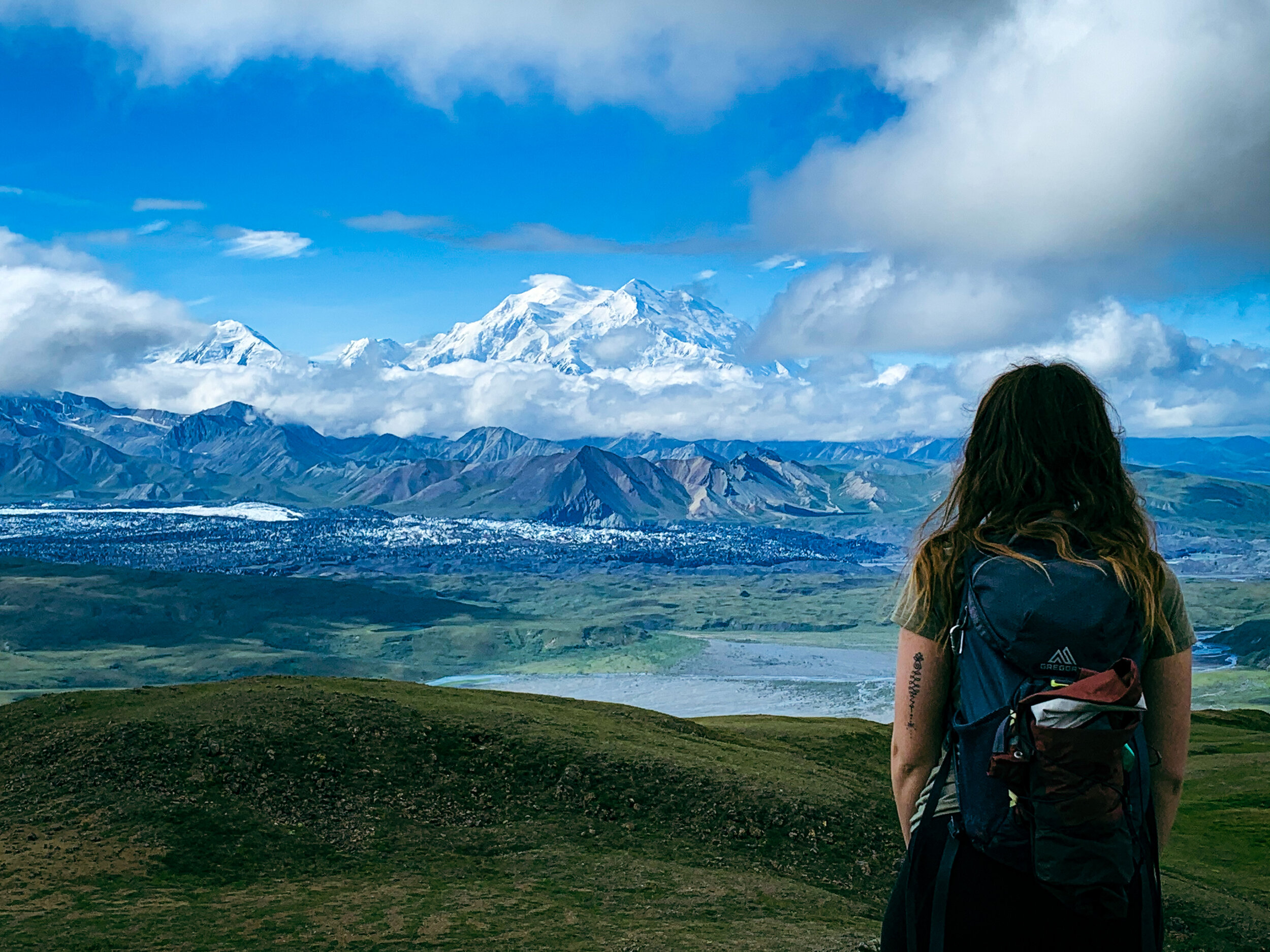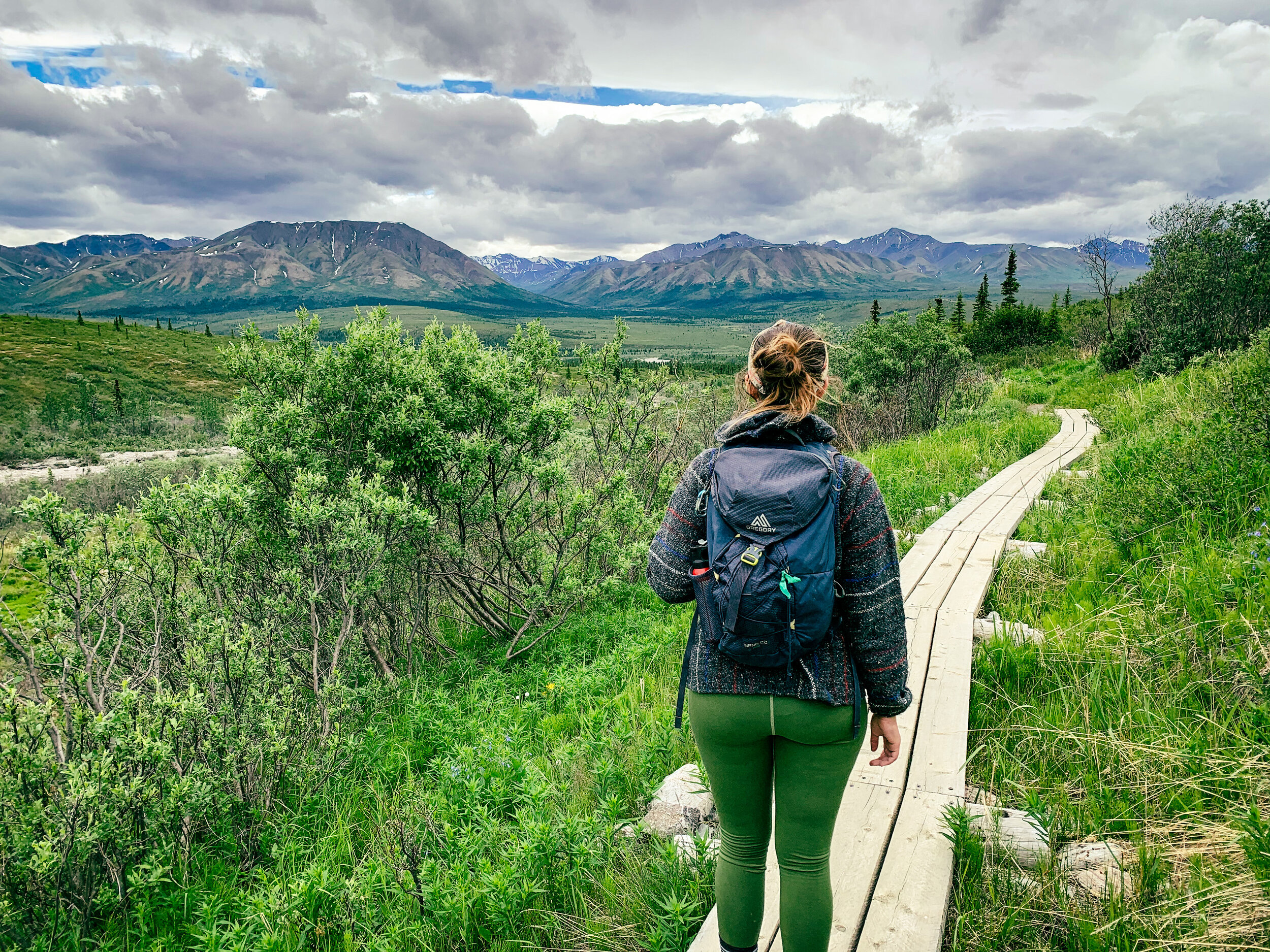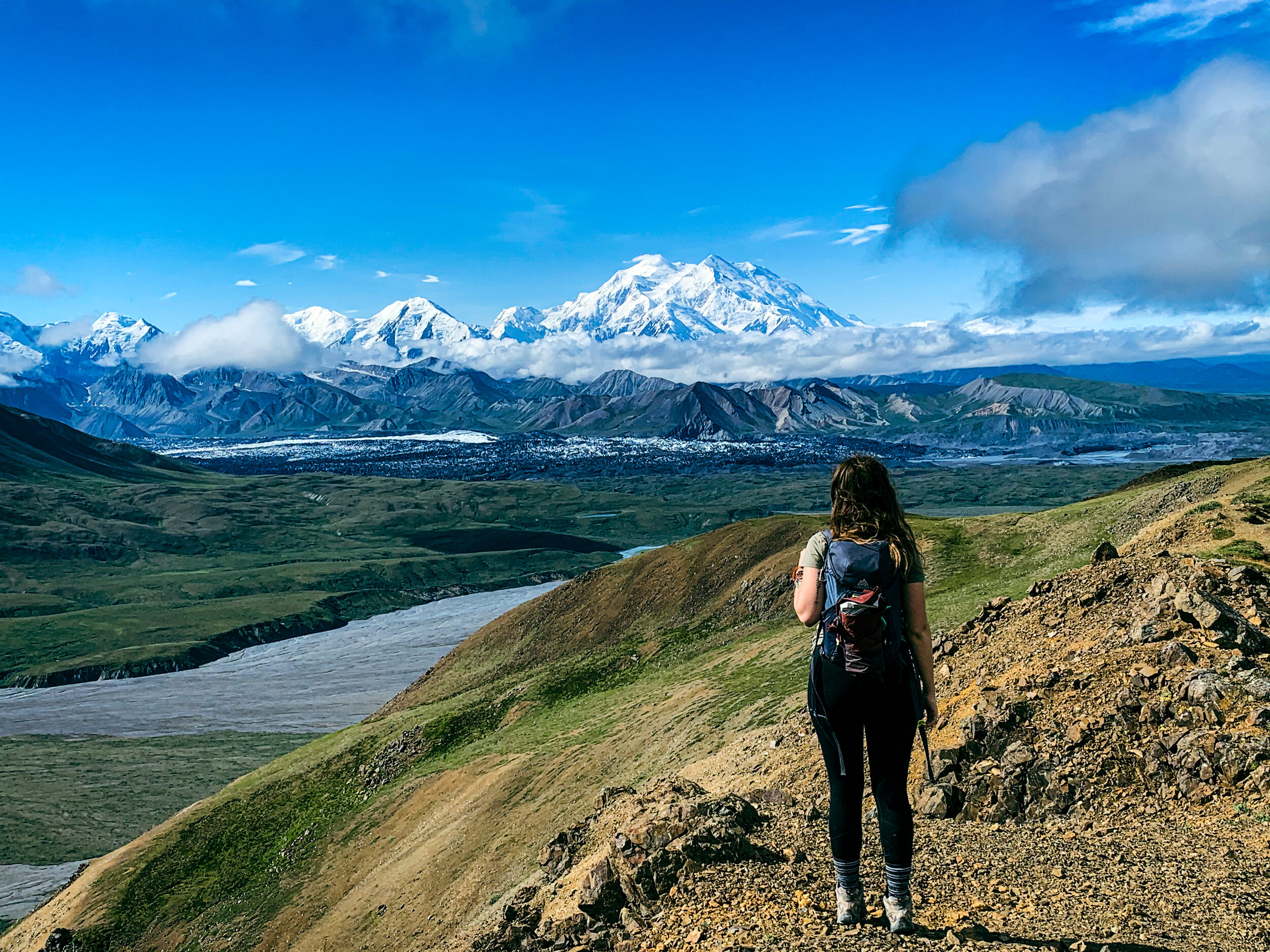For National Park enthusiasts, Denali is one to check off the bucket list. I recently spent 4 months in the Alaskan Interior, and visited Denali 4 times. Between understanding the park road, wildlife viewing, and the best times to see The Mountain, this is your guide to everything you need to know to visit Denali National Park.
Why Visit Denali?
Denali is known as Alaska’s Yellowstone. It is a vast, incredible, open landscape that is mostly closed to vehicular traffic, making it one of the most pristine wildernesses you can drive to. Because of its untouched wild, it makes for an incredible space for healing, meditation, and being with oneself if you are on a pilgrimage pack to yourself. If you’re simply looking for an incredible place to experience the beauty of Alaska’s nature, there is no shortage of that, either. Denali is home to endless wildlife, the tallest mountain in the US, and incredible backcountry experiences you can’t get anywhere else.
This post was written in 2021, so rules may have changed if visiting in future seasons. For the most part, these systems are the same year to year.
Horseshoe Lake Loop Trail
When is the best time to go?
There are only two distinct seasons of visitation in Alaska: Summer and Winter. Of course, there are their versions of spring and fall, deemed the Breakup and the Freeze-up, but most people don’t visit during those periods. Denali is open year round, but unless you’re prepared for sub-zero temperatures, and getting around via dogsled, you’ll want to visit in the summer. Summer season in Alaska lasts from around June 1 to September 15. Businesses usually open around May 15, but some roads are still snowy then.
When it comes to visiting Denali, be prepared to become part of the “70% club.” Only 30% of visitors actually see the Mountain, and your best chances are to go in late June or July, and enter the park as early as possible. You’ll want to hop on a bus to Eielson for your best chances of getting a picture like the one below!
Can I drive to Denali?
This is a complicated question because the short answer is, yes, you can drive to the park. Due to protections instated by the National Park Service, though, you can only drive up to Mile 15 of the Park Road. You’ll be able to get to the visitor center, a few established trails, the bus depot, and your furthest point: Savage River. There are very low chances of getting to actually see Mount Denali from this section of the road, so if you don’t have bus reservations, I suggest visiting the local State Park as well, to try to catch a view of it from the North or South Viewpoints.
The Savage Alpine Trail, one of the established trails accessible from the first 15 miles of the Park Road
How does the bus system work?
The bus system is the only way to explore the park past mile 15. You must have a reservation ahead of time, which you can make through Reserve Denali. There are three types of buses you can reserve: Camper Buses, Transit Buses, and Tour Buses. Exceptions to this include buses going to Kantishna Lodge, and standby tickets only available for campers spending 3 nights or more at Teklanika River Campground.
Camper Buses are only for backpackers and campers staying in one of the Park’s many established campgrounds. These buses can take you to a campground, or drop you off in one of the Park’s backpacking regions.
Transit buses can take you through the park, usually as far as the Eielson Visitor Center. In past years, they were able to take you to Wonder Lake, but as of 2021, Wonder lake was only for campers. Transit buses are not required to give you park information, but are a great way to get to see wildlife, and drive through the park.
Tour buses have to give park information as they drive you through the park, but generally stop before Eielson. So if you want to get all the way to the visitor center, I’d suggest booking a Transit bus.
Due to landslides at Polychrome, the park road became inaccessible at the end of the 2021 season until the park finishes construction on this part of the road. The landslides were caused by melting permafrost. Please contact Reserve Denali to check road conditions before booking your bus ticket.
What are the best hiking trails?
Denali is mostly a free-hike park, meaning you can go anywhere you want in approved areas, without an established trail. If you choose to do this, make sure you’re confident in your navigation skills, and carry a topographical map of the area you’re going to be hiking.
Always carry bear spray when hiking in Alaska.
The established trails that do exist in Denali are generally short, and many of them are located before Savage River on the park road. In this area, the Savage River and Savage Alpine trails are popular, and the Roadside Trail is the only official dog friendly trail in the park. For a trail close to the park entrance, check out the Horseshoe Lake Trail.
Some of my favorites though, are in the Eielson area, including Thoroughfare Ridge Trail, pictured above.
Looking for more information or local conditions? Check the National Park Service Website!












